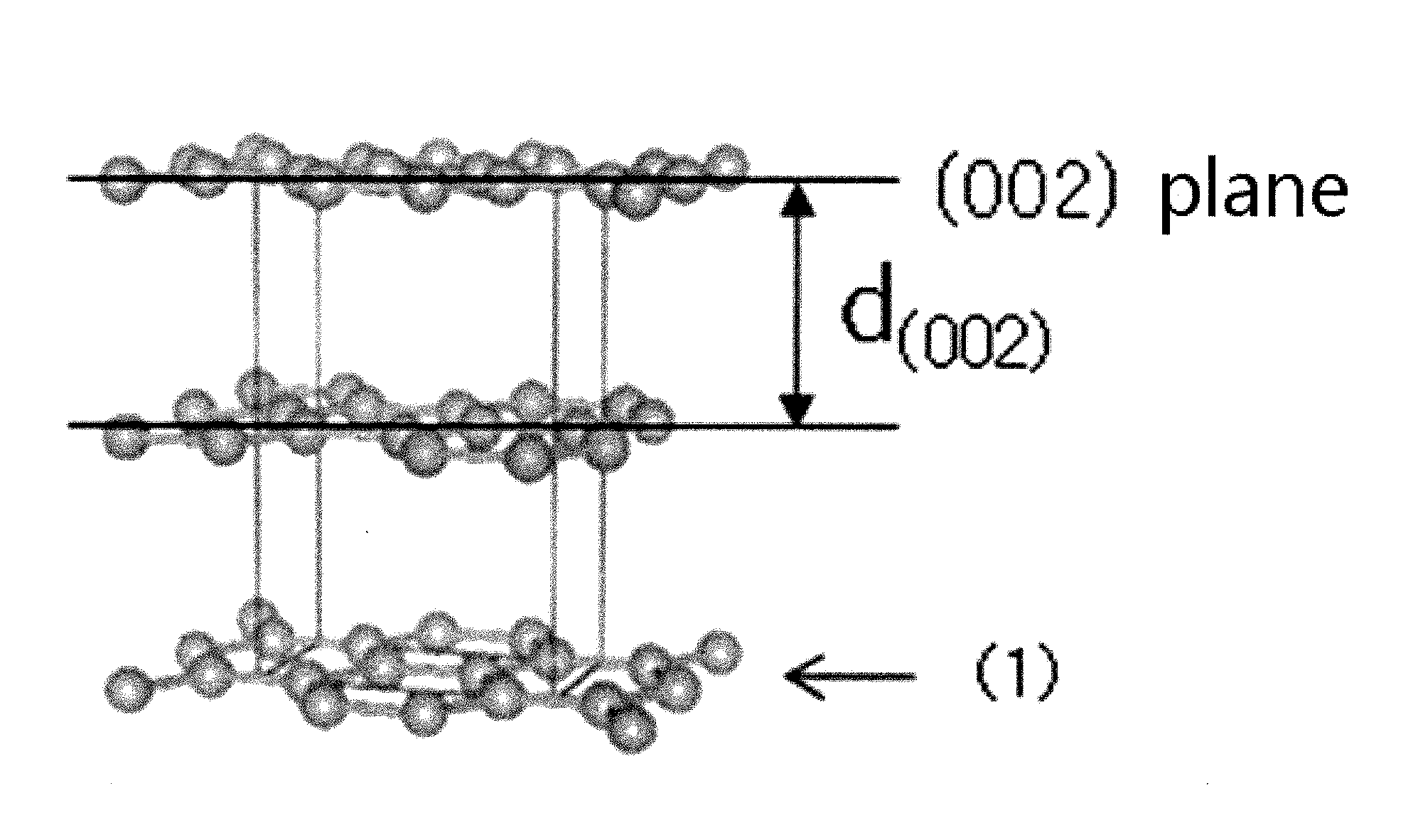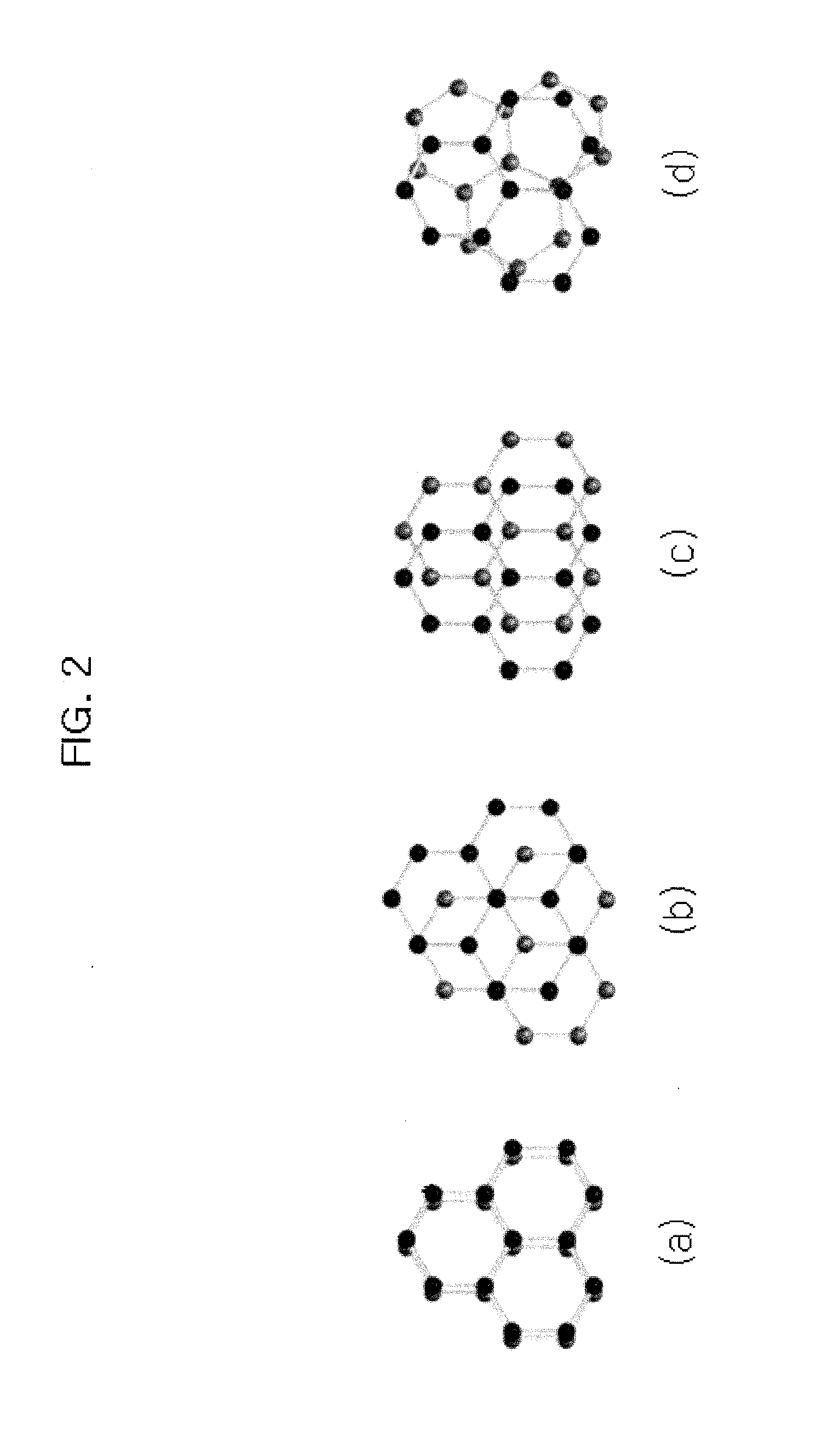Random graphite and fabrication method thereof using graphene nanoribbon
a graphite and nano-ribbon technology, applied in the field of carbon materials, can solve the problem that graphite cannot exist in natur
- Summary
- Abstract
- Description
- Claims
- Application Information
AI Technical Summary
Benefits of technology
Problems solved by technology
Method used
Image
Examples
example 1
[0033]After preparing 5 g of graphene nanoribbons (i.e., pure graphene with a thickness of ˜0.4 nm) which were less than 5 nm in width and less than 10 nm in length, the graphene nanoribbons were put into 1000 cc of alcohol, followed by an ultrasonic treatment for 10 minutes, thereby creating a graphene suspension (a distributed state of this suspension was maintained for more than 3 months, and see (B′) of FIG. 3). This suspension was dried in a oven kept at 100° C.
[0034]The dried graphite material was black and exhibited a granular form with a size of several hundred μM, so it was similar to the existing graphite as it appeared. According to the XRD analysis (λ=1.541 Å) for this material, as shown in (c) of
[0035]FIG. 4, the d-value of the asymmetric (002) peakly was measured to be 3.48 Å. A Transmission Electron Microscopic (TEM) analysis of the random graphite showed that graphene layers less than several nm in length were randomly present (also, graphene layers stacked in parall...
PUM
 Login to View More
Login to View More Abstract
Description
Claims
Application Information
 Login to View More
Login to View More - R&D
- Intellectual Property
- Life Sciences
- Materials
- Tech Scout
- Unparalleled Data Quality
- Higher Quality Content
- 60% Fewer Hallucinations
Browse by: Latest US Patents, China's latest patents, Technical Efficacy Thesaurus, Application Domain, Technology Topic, Popular Technical Reports.
© 2025 PatSnap. All rights reserved.Legal|Privacy policy|Modern Slavery Act Transparency Statement|Sitemap|About US| Contact US: help@patsnap.com



